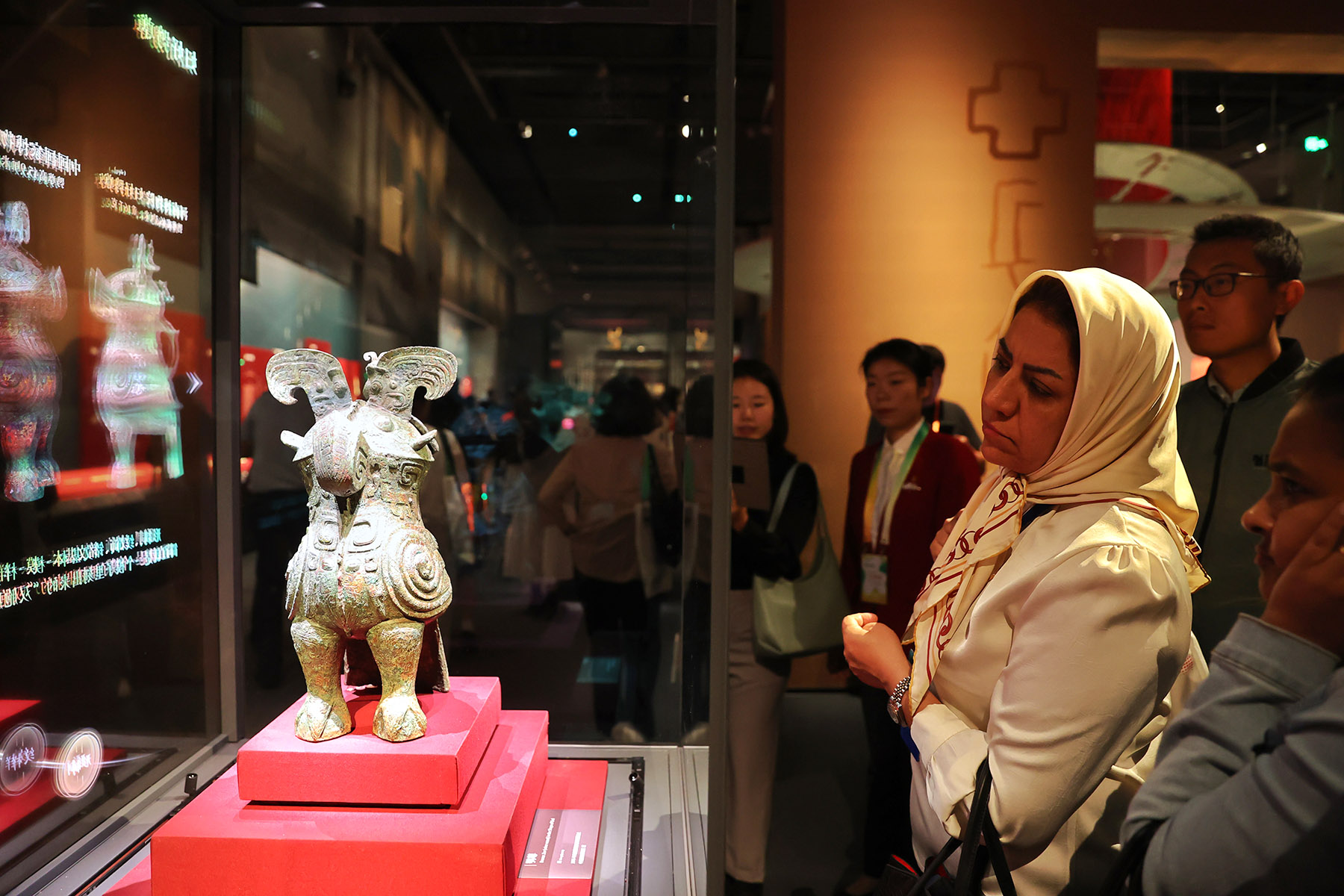Special exhibitions launched to honor nation's rich cultural heritage, history

China celebrated the 49th International Museum Day on Sunday with a showcase of its latest achievements in the cultural sector, underscoring museums' expanding role in meeting the public's spiritual and cultural needs.
According to statistics released by the National Cultural Heritage Administration, China has 7,046 registered museums — an increase of 213 over the past year. That amounts to roughly one museum for every 200,000 people nationwide. Of these, 91.46 percent offer free admission.
In the past year, museums across the country hosted more than 43,000 exhibitions and 511,000 educational activities, drawing a record 1.49 billion visits, according to Rao Quan, director of the National Cultural Heritage Administration. During the Labor Day holiday from May 1 to 5, more than 60 million visits were recorded at museums across China, he said.
READ MORE: With foot in past, museums eye future
"Since 1905, when Nantong Museum — the first public museum in China — was established, the country's museum industry has witnessed 120 years of glorious development, accompanying China's journey toward national rejuvenation, prosperity and cultural flourishing," Rao said. "A museum system with diverse types, broad participation and widespread accessibility has been formed."
International Museum Day was established in 1977 by the International Council of Museums. China, which joined the council in 1983, has since hosted annual events in celebration of the day. Starting in 2009, China has designated a central venue each year to serve as the focal point of national celebrations.
This year's main event was held at the Grand Canal Museum of Beijing, which featured exhibitions, forums and performances.
The museum launched a major exhibition, This Is the Shang, on Sunday. One of the most comprehensive exhibitions on the Shang Dynasty (c.16th century — 11th century BC) in recent years, it offers a panoramic look at the production, social organization, daily life and spiritual practices during the period. The show features 338 cultural relics from 28 archaeological institutes and museums nationwide.
"With rapid technological advancement and rising public demand for spiritual and cultural enrichment, the role of museums in society has become increasingly prominent," said Luo Wenli, deputy director of the heritage administration.
"From once being little-visited places to now sometimes being booked up, from being optional pastimes to integral parts of daily life, from cultural guardians to societal builders, museums have been given new missions," Luo said.
In a video message, Emma Nardi, president of the International Council of Museums, noted the rapid growth of the museum sector in China. She welcomed news that the Dictionary of Museology, a key reference work promoted by the council, has been translated into Chinese, calling it a valuable resource for museum professionals in the country.
ALSO READ: Museums key to promoting international exchanges
Following the opening ceremony of the event at the Grand Canal Museum of Beijing, the city launched a monthslong museum season that will run through Oct 8.Each month will focus on a different museum-related theme, such as exhibitions, technology or study tours, as part of a broader effort to integrate museums with tourism, commerce and performance.
Across the country, museums marked the day with special exhibitions, lectures, cultural souvenirs and volunteer services.
In Sichuan province, several museums offered free admission on Sunday. Visitors to the Sichuan Museum were able to meet cultural relics restorers and learn how ancient artifacts are brought back to life.
Contact the writers at wangru1@chinadaily.com.cn


